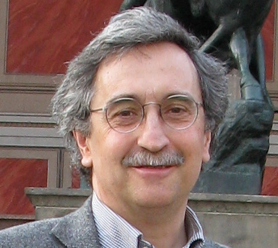
This year 2002, the prize is given to Prof. Piero Baglioni, Professor at the University of Florence and founding professor of the CSGI, the Italian center for the study and use of colloids and surfactants. He has produced several innovations in the filed of organic as well as inorganic colloids He has studied the effect when they are added to colloidal and micellar solutions, and compete with the hydrophobic interface, therefore disturbing the counter-ion cloud and modifying the colloidal stability. He has shown correlations with Hofmeister series, another well studied example where DLVO fails. Using his skills as chemist, he has found a way to increase the metastable regime of nanoparticles of calcium carbonate. This basic research has direct application in restoration of fresqua, where controlling the competing anions carbonate and sulfate around nanometric natural colloids is the big challenge for colloid chemistry, that he was able to tackle with his colleagues.
The 2002 European Rhodia prize for colloids and interfaces has been attributed to Piero Baglioni for his pioneering work of efficient synthesis of a new type of surfactants : short chain nucleosides. Association of hydrophobic chains with polar head groups containing nucleosides brings together the two worlds of biomimetism in molecular systems and recognition processes like in DNA and RNA. Thus, engineered distributions of p-p interactions and hydrogen binding produces helixes, fibers and stacks are combined with the amphiphilic behavior inducing droplet micelles, wormlike micelles, microemulsions and lyotropic liquid crystals. With his colleague Deborah Berti and team, he has experimentally proven on samples synthesized using new and efficient routes, that molecular recognition and micellar formation coexist in the same systems. This complete realization, from design to synthesis to the active recognizing self-assembled system, is the realization for which the European colloid prize has been attributed for the second year of existence.

